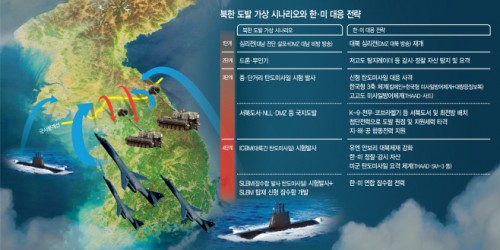 |
AsiaToday reporter Lee Jang-won
After blowing up a joint liaison office, North Korea continued to ratchet up pressure on the South. On Sunday, the North’s United Front Department (UFD) reaffirmed its plan to launch anti-South Korea leaflets, a day after the Ministry of Unification expressed regrets over the plan and urged the North to stop it immediately. It seems Pyongyang will continue its hardline tactics aimed at exerting pressure on both Seoul and Washington.
The North Korean Embassy in Russia issued a warning on Saturday ahead of the 70th anniversary of the outbreak of the Korean War, saying that an outbreak of a new war on the Korean Peninsula could lead to the destruction of the United States by the North’s nuclear weapons. “We can ruthlessly punish any forces that attempt to threaten us wherever they are in the world,” it said.
With defectors’ anti-Pyongyang leaflet campaign as justification, North Korea blew up the inter-Korean liaison office in Gaesong. Experts say such extreme action reflects its hopes for sanctions relief and economic aid. It intends to draw attention from the international community using its nuclear and strategic weapons. This is why the North is also considering launching a new submarine and submarine-launched ballistic missile (SLBM).
However, experts point out that its old-fashioned armed protests no longer attract the international community’s attention, but only isolate itself. Besides, its nuclear and strategic weapons, which the North has not given up amid its severe economic crisis, are never a threat to the United States.
A military expert told AsiaToday in a phone interview that a 3,000-ton class submarine that North Korea is currently constructing would be immediately caught by the United States in international waters upon departure. “The United States has been committed to developing submarine detection technology for the past 60 years in competition with Russia. It doesn’t make sense that the U.S. won’t be able to detect the North Korean vessel,” he said. Regarding the North’s nuclear and intercontinental ballistic missile (ICBM) test, he said, “In order to destroy the United States, it would need at least 350 to 1,000 nuclear warhead missiles. North Korea doesn’t have time or economic capabilities to develop such weapons.”
Experts criticized that North Korea’s provocation to South Korea is anachronistic. They threw a doubt on the North’s anti-Seoul leaflets criticizing President Moon Jae-in that have been revealed on Saturday, questioning its effectiveness. Experts pointed out that North Korea should recognize that it can no longer accomplish its intended goal with armed protests. In fact, North Korea has never won a battle against South Korean troops during its provocations.
Experts have suggested that North Korea should come back to the negotiating table as soon as possible if it wants to overcome economic difficulties through sanctions relief. Experts point out that rather than blaming the South Korea-US working group as a major reason behind the failure to implement inter-Korean agreements, the North should show its willingness for denuclearization so that the South Korea government can persuade the United States and the international community.
“North Korea cannot frighten South Korea, the United States and the world with its military power. It is clear that its military provocation will not only bring tragedy on the Korean Peninsula but also an end to the North Korean regime,” said Lieutenant-General Chun In-bum, a retired South Korean special forces commander.
#North Korea #provocation #South Korea #threat #ICBM
Copyright by Asiatoday
Most Read
-
1
-
2
-
3
-
4
-
5
-
6
-
7





















